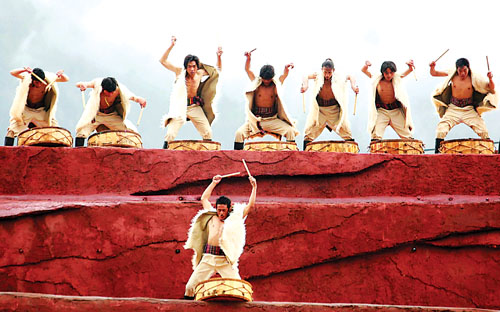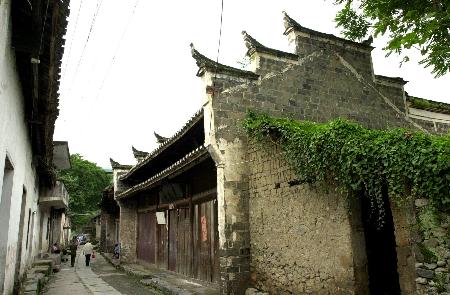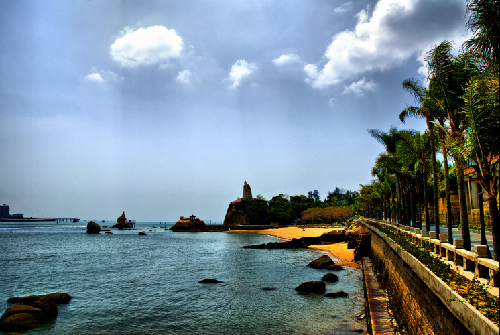How to achieve a win-win situation in cultural tourism
 |
|
|
Cultural tourism in China is making rapid progress nowadays. It has become a pillar industry, especially in some mountainous areas with scarce resources and poor economic development. That explains the intense debate on the tomb of Cao Cao, as well as the museums of ancient or even modern celebrities built wherever they have been. In the fighting over economic benefits, the people lose sight of the significance of culture and the modes of tourism become more and more homogenous. The consequence is, on one hand, the tourist gets nothing from the tour experience and it is totally against his will to start the travel; on the other hand, the tourist attraction gradually loses its unique culture even as the local government invests huge amounts of capital in tourism. How, then, can we achieve a win-win situation for culture and tourism? This is the first question which should be taken into consideration in the development of cultural tourism.
Cultural tourism is divided into four levels: the historical culture level represented by cultural relics, historical records, ruins, ancient buildings, etc; the modern culture level represented by modern culture, art, and technical achievements; the folk culture level represented by the local residents’ living customs, holiday celebrations, sacrificial rites, weddings, funerals, sports and garments; and the moral and ethical culture represented by interpersonal communication. In China, a country grown out of an ancient civilization, almost every place has its own unique history, and each tourist attraction can be developed in many ways to achieve a win-win situation. Thus, the culture will enhance tourism, and tourism will transmit culture.
 |
|
|
Exploring the Depth of Culture:
In the famous painting, “Riverside Scene at the Qingming Festival”, by Song Dynasty painter Zhang Zeduan, seeing the thousands of sails in the river alongside people doing business at the market in Bianjing, spectators are taken back to the prosperous Bianjing. It could be said: once into the painting, the viewer is transported as if by a dream to an era one thousand years ago. Nowadays, tourists have the opportunity to experience the life of the Bianjing people at that time. In the Riverside Scene at the Qingming Festival Park at the northwest of Kaifeng, Henan, everything in the painting reappears here—the tower over the city gates, Hongqiao Bridge, streets, shops, the river, the dock, boats—everything. Here, tourists can watch the fabrication on site of Bian embroidery, official porcelain, and paintings. They can appreciate folk games, acrobatics, drum set performances, and experience fortune-telling, gambling, cock fighting, dog fighting and other charming traditions of ancient Bianjing. The park succeeds in driving the economy, and promoting the development of clothing, folk products, and social employment of Kaifeng—but, more importantly, it succeeds in warming one’s heart.
Exploring the depths of culture is reflected in the use of a cultural product. The mold of the Riverside Scene at Qingming Festival Park tourist brand is the vivid case of tapping the cultural source and producing the tourist brand. It reflects the idea that to develop cultural tourism, the resources of a culture should be used and the history and lifestyle and customs of a place should be explored, so that the tourist can enjoy cultural value.
 |
|
|
With that in mind, the General Coordination Division Inspector of the National Tourism Administration, Zhang Jianzhong said the success of Riverside Scene at the Qingming Festival Park shows that culture is the soul of tourism and tourism is the best carrier of cultural transmissions. Tourism without culture is not sustainable and dynamic. From the prospective of tourism, the pursuit of culture is the starting point and destination.
Increase Cultural Creation:
The famous director Zhang Yimou’s “Impression: Lijiang” has become one of the direct ways for tourists to experience the culture and national characteristics of Lijiang. In the large-scale live performances, with the Jade Dragon Snow Mountain as the backdrop, more than 500 actors of Naxi, Tibetan, Bai, Yi, Miao and other ethnic minorities living in Lijiang running, singing, drinking, playing the Finger Guessing Game, and falling in love on the stage, Lijiang offers the tourist “a feast to clean the soul.” Zhang Yimou’s series of “Impressions,” especially the “Impression: Liu Sanjie” and “Impression: Lijiang,” greatly promote the local tourism industry.
However, as with the impressions series, “Impressions: Hainan Island” with a total investment of nearly 2 billion, faces a different fate. Over the past year, at the Sea Urchin Theatre capable of accommodating 1,500 spectators, the attendance of the “Impression” has been poor, with audiences only taking up one third of the seats. Many viewers think that this show lacks artistic content and any vestiges of the local culture of Hainan.


















